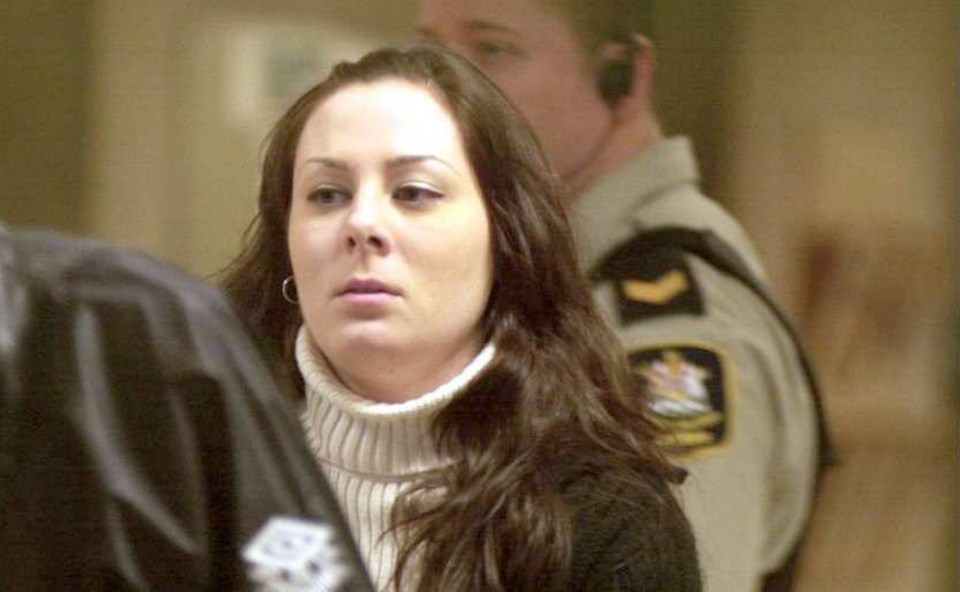Children can do well when allowed to live and bond with their incarcerated mothers, according to a researcher who has studied mother-baby residential programs in provincial jails.
Kelly Ellard, who is serving a life sentence for the 1997 beating and drowning death of Saanich teen Reena Virk, is eight months pregnant. While the Correctional Service of Canada would not comment on Ellard’s pregnancy, it is possible the baby could remain with Ellard in federal prison under the mother-child residential program, implemented in 1997. Six children are currently living with their mothers in federal prisons, according to Corrections Canada.
A similar mother-child program exists in provincial jails, the subject of a study by Amy Salmon, a researcher with the Centre for Health Evaluation Outcome Sciences at the University of British Columbia.
“I saw babies being cared for beautifully by their moms and whose presence was really valued and cherished, not just by their moms, but by many of the other women in the prison as well,” said Salmon, who looked at about 15 mother-child relationships in the Alouette Correctional Centre for Women.
“They thrive because they have their mom’s full and undivided attention, they have support from staff members and other women inmates who are also mothers themselves,” she said.
Salmon said incarcerated women are often victims of poverty or abuse, so having a safe and supportive environment in which to raise a child can break that cycle of marginalization.
“[Mothers] were really getting a chance that they never thought they would have to show themselves and show the world what good parents they could be when given the proper resources.”
The living quarters for women and children do not fit the stereotypical image of a jail with steel-bar cells and large communal spaces, Salmon said.
In Alouette, the nursery was brightly decorated with murals, some painted by other inmates, and included toys, books, a kitchen and a bathing area.
The provincial program restarted in June 2014, following a lawsuit against the province for cancelling it in 2008. Two inmates have had their babies live with them in incarceration, but there are currently no participants in the program, according to the Ministry of Public Safety.
Ellard was able to conceive during conjugal visits with Darwin Dorozan, who was out of prison on day parole, according to the Vancouver Sun. The Sun reported that Ellard and Dorozan got to know each other as pen pals, writing for more than a year before being allowed to have a private family visit.
Dorozan, 41, who was serving a sentence for a string of violent break and enters, was granted full parole in August. His parole was revoked after he allegedly violated his conditions.
Conservative MP Tony Clement said he would like to see a child advocate assigned to Ellard’s case to ensure the best interests of the child are considered. “This could be a situation that ends up being very poor for the newborn, and none of us wants that. The child is an innocent victim of the circumstances,” he said.
Clement said he’d like to see a review of the family-visit policy that allowed Ellard to spend time with a parolee.
“How was this allowed to happen that these two were approved for a conjugal visit?” Clement asked. “And what policy changes can we review to make this the exception rather than something that keeps getting repeated.”
Corrections Canada did not respond to queries about the maximum age a child can remain in a federal prison with an incarcerated mother, but Salmon said correctional-service guidelines allow children to stay up to four years old.
Under the provincial program, babies are allowed to live with their mother until two years of age to facilitate breastfeeding and bonding.
After that time, the child can either be cared for by the next of kin or placed in foster care.
The B.C. government would not say how it would handle child-protection concerns in an individual case.
But Minister of Children and Family Development Stephanie Cadieux said: “Child protection is approached the same way whether the mother is incarcerated or a member of the general community.”
When the ministry does get involved, its ultimate goal is to keep families together, Cadieux said.
“When it is not possible for children to stay with a parent, attempts are made to place children with extended family or persons known to a child who are assessed to be safe and appropriate to provide care. Taking a child into care is always a last resort — and is done to reduce the risk to the child if there are no other viable care alternatives.”
— With files from Lindsay Kines and the Vancouver Sun



